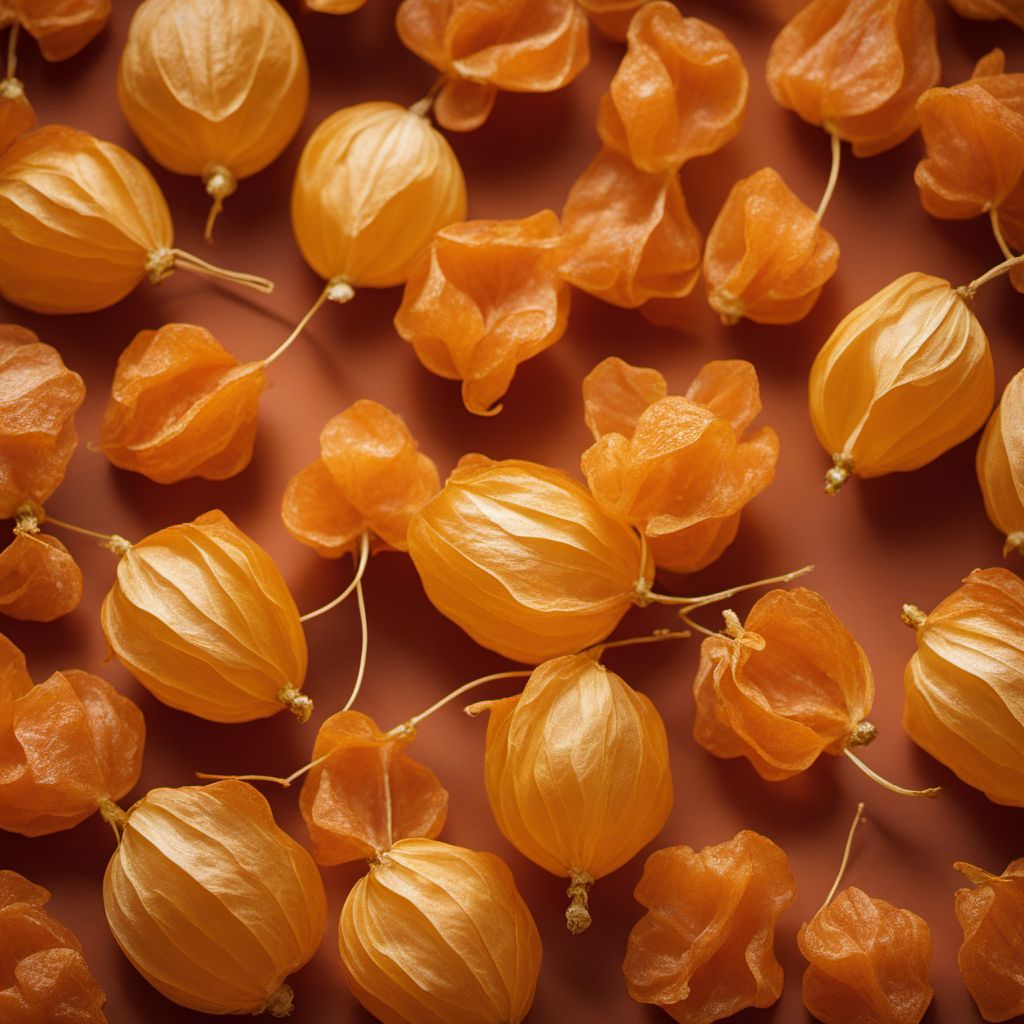
Ingredient
Alkekengi
The Fiery Lantern
Alkekengi is characterized by its bright orange, papery husk that encases a small, edible fruit. The fruit itself is tart and slightly sweet, with a texture reminiscent of a cherry tomato. The husk, often used for decorative purposes, is dry and papery, adding a unique visual element to dishes or floral arrangements.
Origins and history
Alkekengi is native to East Asia and has a rich history in traditional Chinese medicine. It was believed to have medicinal properties and was used to treat various ailments. In culinary traditions, Alkekengi has been used in jams, jellies, and desserts, adding a tangy flavor and vibrant color to dishes. Its papery husk is also commonly used in floral arrangements and crafts.
Nutritional information
Alkekengi is low in calories and a good source of vitamin C and antioxidants. It also contains small amounts of vitamin A and potassium.
Allergens
There are no known allergens associated with Alkekengi.
How to select
When selecting Alkekengi, look for firm, intact husks with vibrant orange color. Avoid husks that are discolored, wrinkled, or damaged. The fruit inside should be plump and firm, without any signs of mold or decay.
Storage recommendations
To store Alkekengi, remove the husks from the fruit and place them in a cool, dry place. They can be stored for several months. The fruit itself should be consumed or used within a few days of harvesting.
How to produce
Alkekengi can be grown from seeds or propagated through division. It thrives in well-drained soil and prefers full sun or partial shade. It is a hardy plant that can tolerate various climates, making it suitable for home gardens.
Preparation tips
To prepare Alkekengi, remove the husk and rinse the fruit under cold water. The fruit can be eaten raw or used in various culinary applications, such as jams, jellies, or desserts. The husks can be dried and used for decorative purposes or in crafts.
Culinary uses
Alkekengi is commonly used in jams, jellies, and desserts. It can also be used as a decorative element in floral arrangements or crafts.
Availability
Alkekengi is commonly available in East Asia, particularly in China and Japan.

